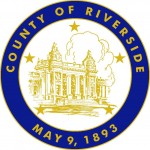Not long ago, my wife was cleaning up an old framed, hand-tinted photograph of a nondescript desert scene, a piece we’d inherited from my parents years ago. Because my father loved the desert, I assumed this was merely a personal memento of times he’d spent as a teenager visiting relatives at Mecca.
Yet it had a compelling quality we couldn’t quite pin down. Then, while removing the frame for cleaning, Adele discovered a signature that had been obscured: “The White Noon© Stephen H. Willard.” This was a prize indeed, and it renewed my interest in Willard.
When I wrote about distinguished Idyllwild photographers in 2013, I mentioned Willard only in passing. He was by far the most renowned of the group, but unlike E.B. and Bob Gray, Avery Field or Harry Wendelken, Willard never really settled here.
His forte was desert landscapes; his home studio and gallery were in Palm Springs. But he loved mountain landscapes, too. He honed his taste for these during camping trips in the San Gabriel and San Bernardino mountains, as well as the Sierras, after receiving his first camera in 1908 at the age of 14.
Born in Illinois, Willard grew up in Corona and attended Pomona College. He began making picture postcards with a college friend, Wright Pierce, and together they opened a studio. After serving as an Army photographer during World War I, he discovered Palm Springs, where he began capitalizing on tourists’ fondness for postcards to send home.
This acquainted him with the San Jacintos. He spent a rewarding summer of 1920 in Idyllwild, where he met his wife, Beatrice. His time here produced a multitude of postcards with scenes of both Idyllwild and Keen Camp, the home of Tahquitz Lodge (now Living Free).
Stephen and Beatrice married in 1921 and spent a year traveling and photographing Southwestern deserts before settling in Palm Springs and opening a studio and gallery. There he developed his distinctive style of portraying desert landscapes by hand-tinting black-and-white photographs to capture their original colors and moods.
We know Willard made at least one return visit to the Idyllwild Inn in 1923 and probably others. Then in 1934, to escape the summer heat, he formalized his excursions to the eastern Sierras by establishing a studio at Mammoth Lakes. He continued to alternate winters and summers between Palm Springs and Mammoth, until he found the Coachella Valley’s postwar population explosion too unbearable.
So the Willards moved in 1947 to a ranch in the Alabama Hills near Lone Pine and made the Mammoth studio his headquarters. There he capped his life and career, photographing the Sierras until his death in 1966. His massive body of work now resides at the Palm Springs Art Museum.
Along the way, perhaps through continuing Idyllwild visits, Willard developed a taste for Selden Belden’s Pinecraft furniture. We have no evidence that he got acquainted with Belden, who also had been a photographer, but Willard did furnish his Mammoth studio with several pieces.
Current owners Robert and Sue Joki have expanded Willard’s Pinecraft collection to more than 100 pieces since 2013, when they reopened the studio as The Gallery at Twin Lakes.
Bob Smith is a researcher and archivist with the Idyllwild Area Historical Society. He welcomes comments, questions, corrections and suggested topics for this column at [email protected].










